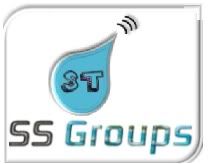
Mouse (computer), a common pointing device, popularized by
its inclusion as standard equipment with the Apple Macintosh. With the rise in popularity of graphical user interfaces (Graphical User Interface) in MS-DOS; UNIX, and OS/2, use of mice is growing throughout the personal computer and workstation worlds.

The basic features of a mouse are a casing with a flat bottom, designed to be gripped by one hand; one or more buttons on the top; a multidirectional detection device (usually a ball) on the bottom; and a cable connecting the mouse to the computer.

See the illustration.
By moving the mouse on a surface (such as a desk), the user typically controls an on-screen cursor. A mouse is a relative pointing device because there are no defined limits to the mouse's movement and because its placement on a surface does not map directly to a specific screen location.

To select items or choose commands on the screen, the user presses one of the mouse's buttons, producing a “mouse click.”
















